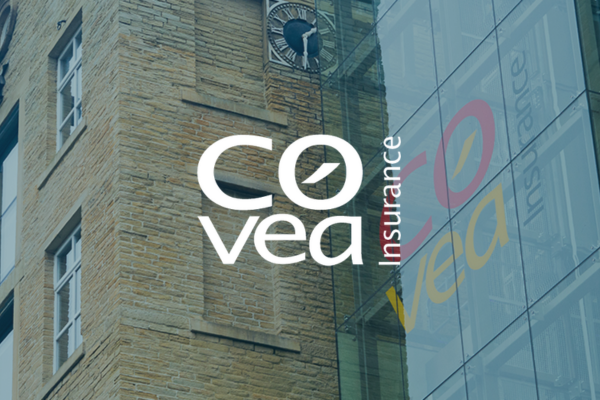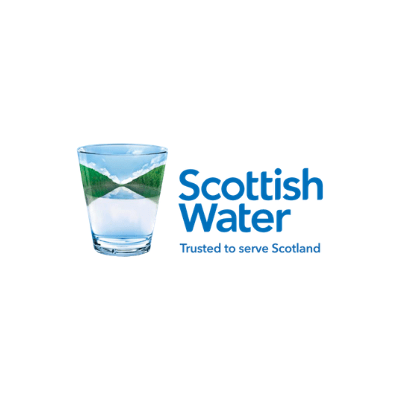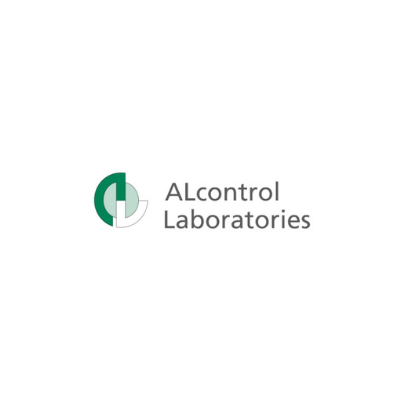Sara Herrington, Head of Customers, and Adam Clark, Executive Director of Customers discuss the benefits of organisational membership and the impact of Business Benchmarking, ServCheck and ServiceMark on their service strategy:

Sara Herrington, Head of Customers, and Adam Clark, Executive Director of Customers discuss the benefits of organisational membership and the impact of Business Benchmarking, ServCheck and ServiceMark on their service strategy:

Sarah Hopgood, Operations Support Manager – Protections at Covéa Insurance discusses the impact that Business Benchmarking, ServCheck and ServiceMark accreditation have had.

Sarah-Jane McCausland, Customer Communications & Engagement Lead at Covéa Insurance discusses what it means to be a long-standing member of The Institute, the networking opportunities, and the impact of ServiceMark accreditation.

Watch Andy Pymer, Executive Director of Finance and Regulation at Wessex Water, highlight how membership and ServiceMark with Distinction helped them achieve a high rank in Ofwat’s Customer Measure of Experience and Developer Services Measure of Experience league tables.

Watch Dean Anderson, Customer Experience Manager at Edinburgh Trams, share how ServiceMark and Professional Qualifications, among other membership benefits, have helped them consistently grow their customer base over the last 7 years, increase colleagues and customer satisfaction, reduce complaints handling and increase employee retention.

The company’s operations are extensive. It services some 2.4m domestic households and 160,000 businesses in Scotland. With a turnover of £1.2bn per year and employing around 3,750 staff, it is the fourth largest water company in the UK. With such a large customer and geographical base to cover (30,000 square miles), it is not surprising that Scottish Water has a very busy workload. It deals with, for example, around 40,000 sewer blockages a year. Service standards, therefore, are an absolute priority.
High aspirations, Scottish Water’s commitment to customer service is in part driven by its regulator, the Water Industry Commission for Scotland, who sets the service (and efficiency) standards that it must meet during each regulatory period. The company has in fact set itself even higher standards that it aspires to reach. It benchmarks itself not merely against other utilities but against other leading service providers in different sectors.
Peter Farrer, Chief Operating Officer at Scottish Water, who has responsibility for both operations and service, says: “Customer service is fundamental to what we do. We have proven that you don’t have to be a private company to deliver leading levels of service. We’ve also shown that, with the right focus, it is possible to drive up both customer service and operational efficiency at the same time.” The company has taken customer service seriously for a long time. Nine years ago, it introduced a ‘Customer Experience Measure’ whereby customers who have dealt with Scottish Water receive a survey asking for their views on their experience.
When this started out, it was done every six months to a sample of 1,000 customers. In the last few years, however, the company has significantly expanded this so that any customer interacting with the company receives a survey, sent to them by the same channel as they contacted the organisation through (phone, email, social media etc). Response rates are impressive, with around a quarter of surveys being completed, meaning that the company receives 1,000 to 1,500 pieces of detailed customer feedback every month.
This expansion of the Customer Experience Measure is one of the things that Peter Farrer has introduced since becoming a Board Director in 2009. But he has also deepened the level of information captured so that a customer’s satisfaction can be taken right down to an individual operator level in the contact centre or the field. League tables are produced at an individual, team leader and manager level.
“This has driven a real culture change. It’s one of the ways we’re doing things that not many other utilities are,” Peter explains. “Nobody wants to be at the bottom of the league table! But we don’t just use the information for coaching purposes around areas for improvement, we also use it for positive and motivational purposes, such as positive reinforcement when a customer praises an individual or team for great service. It gives us such a rich seam of information. We have recently introduced the Customer Experience Measure for businesses too.”
Another important facet of Scottish Water’s commitment to customer service is its membership of The Institute of Customer Service. Again, this is an area that Peter has driven significant changes to since becoming Chief Operating Officer. Scottish Water is in fact one of The Institute’s earliest members, joining in 1999. But for many years the company largely confined itself to working with The Institute on the training of its front end customer service staff.
Peter became a Board Member at around the same time as Jo Causon became CEO of The Institute. As one of The Institute’s largest members, Jo came to visit Peter early in her tenure. “We made a great connection,” Peter recalls. “I was very impressed by Jo’s passion and enthusiasm for improving standards of customer service, and I think she was impressed by our focus on it too.” Jo invited Peter to become a Vice President of The Institute. The Vice Presidents don’t sit on the Board itself but meet regularly in an advisory capacity. “Being a Vice President means that I rub shoulders with other senior executives from some of the best customer service organisations in the country,” Peter says. “We can share learnings and experiences, and I can take things back to try them at Scottish Water.
The company also makes much greater use of some of The Institute’s products and services such as the UK Customer Satisfaction Index (UKCSI), which surveys 10,000 individual customers of organisations across 13 sectors. The Institute has also provided an additional benchmark based on the responses of Scottish customers in the UKCSI. “Previously we didn’t utilise the UKCSI, but now it’s one of our fundamental business measures,” Peter says. “We use it as a means to benchmark ourselves not just against other utilities but against leading providers of other essential goods and services. Utilities are one of the poorest performing sectors in the UKCSI so we don’t want to just be the ‘best of a bad bunch’, we want to match the best, full stop. We have to be realistic though, because we’re always going to struggle against the likes of Amazon or John Lewis with whom customers have such regular interaction. That’s why we are targeting leading levels of service provided by other providers of essential products and services like Food Retail. Water is still a ‘silent service’ for many, but we’ve been doing pretty well, near the average across all 13 sectors. That’s good, though we still have further to go.”
The company has also achieved ServiceMark, a national accreditation awarded by The Institute, that recognises an organisation’s achievement in customer service – and was in fact the first large multi-site organisation to obtain it. Last year it gained re-accreditation. Peter reflects: “Whereas the UKCSI is in effect a lag indicator of how you have been doing, both ServiceMark and the employee survey ServCheck, are cultural indicators of how you’re performing. So they are really important to us too. ServiceMark, with its absolute scores that you have to meet, sets a high standard. We have also spent a lot of time with The Institute redesigning our various in-house training programmes for staff.” Another area the company has been involved in is The Institute’s forum on providing service to vulnerable customers. This has led to it linking up and working closely with electricity distributor Scottish Power Energy Networks. “That’s one of the many spin-offs at all levels from our involvement and participation with The Institute,” Peter says.
Results have been going well. When Scottish Water first featured in the UKCSI nine years ago, satisfaction using their own real time Customer Experience Survey tool was at 60%. Now, they are consistently hitting 90% or more. The ‘Your Voice’ employee survey meanwhile, which is run independently, has an 80% return rate with engagement scores improving from 50% to around 70% in the last five years. “I don’t think there’s any doubt that working with The Institute has had a fundamental impact on our progress,” Peter says. “The regulator plays an enormous role, setting the standards we have to meet, the hygiene factors if you like. But with The Institute we have awoken to the art of the possible, setting our own agenda on how far we want to push service standards over and above the regulatory targets. The Institute has held the mirror up for us and made us look across all of the other 12 business sectors too. They have given us some lightbulb moments.”

The company’s Food & Water division, with 5 sites throughout the UK, is one of the UK’s biggest testers, carrying out some 8 million tests annually. Open for business 365 days of the year, and often needing to test into the early hours in order to meet customer deadlines, the work is fast-paced and can have unpredictable peaks.
The division’s work plays a hugely important role as part of a safety regime which protects and informs the public, testing that food is safe and contamination-free, checking and verifying nutritional claims and labelling (including for example that a product is ‘nut-free’), and substantiating the authenticity of food products too, think of the horsemeat scandal from a few years past.
Around 80% of the division’s work is food testing, with the other 20% involving testing the quality of water (important for water processing plants or for renal units, for example, in hospitals). “A demanding environment.” Mike McCorkell, Managing Director of the UK Food & Waters division at ALcontrol, explains: “We have 50 vehicles that collect food samples from manufacturers daily and for food safety tests we have to process them straight away. Most of our testing is pre-scheduled but even so we don’t usually know until the day it’s actually due to arrive what the volumes will be. So it can be quite pressured getting through the work and we rely considerably on the engagement, flexibility and goodwill of our staff to get the job done well. Not only can the work be pressured for staff, but the results can also lead to high stress situations for their customers. Listeria for example, in a manufacturer’s sample, then we have to break what is obviously a piece of very bad news to them,” Mike comments, “You’ve got to do that in a sensitive and human way , one of the areas where the need for excellent customer service really comes in.”
It was four years ago when the company was consolidating some of its sites that it really occurred to Mike that a radical change to a more customer service focused approach was needed. “We were in danger of being too transactional in our dealings with customers, treating the work like a Lean production line. Our organisation was perhaps somewhat introverted as well, working hard under the bonnet but not communicating enough with customers in an engaging way. Mike recruited an experienced service and engagement expert, Julia Bloomer, from the steel industry (another tough industry, fighting hard for marginal gains) to supplement his team and together they set ALcontrol off on what has been a fruitful and rewarding journey.
Julia had experience of The Institute of Customer Service from her previous role, and enrolled the Food & Water division as a member too. Since 2013, the company has made wide use of The Institute’s products and services, including putting many of its staff through training programmes, such as FirstImpressions and ServiceManagement, using Business Benchmarking putting leaders and managers through Institute training qualifications for Communication, Solutions, Innovation and Coaching obtaining one of The Institute’s most prestigious accreditations, ServiceMark.
ServiceMark requires an organisation to carry out a survey of its employees to benchmark engagement; a survey of customers to gauge their level of satisfaction; and have an independent assessment carried out by an Institute representative. All three components require challengingly high scores in order to achieve the accreditation.
Julia Bloomer says: “There’s no doubt that being members of The Institute has really paid off for us. It’s benefited us in lots of different ways. Obtaining ServiceMark was the icing on the cake if you like, although for me the most important thing isn’t obtaining the accreditation, it’s the journey to get there and the things you learn along the way. The journey is still ongoing too. We’re the only commercial laboratory in the country to have ServiceMark so it stands out as a truly independent verification of our standards. Some of our competitors promote in-house survey results but without any facts or confirmation, so it’s a great achievement for us.”
And it’s not just a nice piece of paper or a plaque for the company to display, it has led to real return on investment. The food testing industry is a price sensitive marketplace, and margins are low. Getting fairly rewarded for work and making a sustainable profit can be challenging. Obtaining ServiceMark along with other Institute programmes, and achieving the underlying service standard that enabled this, has helped the company to swim against the tide on price. What it’s done for us is given us the knowledge and the confidence to increase our pricing in a fair way, knowing that our customers recognise our service offering too and will stay with us. So it’s had a direct commercial benefit,” Julia says.
Other programmes have led to financial benefits as well. “In the FirstImpressions training course, you have to come up with an actionable plan to improve an aspect of the business. One lady came up with a suggestion to plug a previously unseen revenue leakage around the way we invoice for agreed carriage charges which led to a £10,000 increase on the bottom line every month,” Julia says. “The training people go through has given them a voice and a sense of people power, that’s a return on investment in itself.” Putting the focus on customer service has paid off in multiple ways. Customer retention now stands at 95% compared to 85% four years ago; the average selling price per test has increased year on year for four consecutive years; employee retention has also increased; while the average employee engagement score has risen from 50% in 2012 to 84% now.
“We’ve had a seismic cultural change,” Mike McCorkell observes. “We have a much improved workplace where people enjoy their jobs and are proud to tell their friends and family what they do at work. It is pleasing that when customers visit or audit they pick up on the vibe and comment on it and can see that we’re doing a good job. I’m proud to say that we love to let customers loose on site!” Julia adds. “We can let them stop and talk to anyone, anywhere. I don’t know how you put a price on that. Around 75% of the company’s 420 staff have now been on at least one Institute training programme and the aim is to get that to 100% in time. We benchmark ourselves with great service leaders in other industries, not specifically the food testing business which perhaps is less mature in developing service leadership,” Mike says. “I think we’ve created something quite unique, we’ve built a strong ethos around being a great place to work dedicated to great service, creating quality opportunities and careers for people.”
Other divisions in ALcontrol are now on the same journey, adopting a similar customer service focused approach and working to the same ‘value cycle’ where engaged staff drive great service helping the business gain a fair price and sustainable profitability. A commitment to customer service is now deeply embedded.
